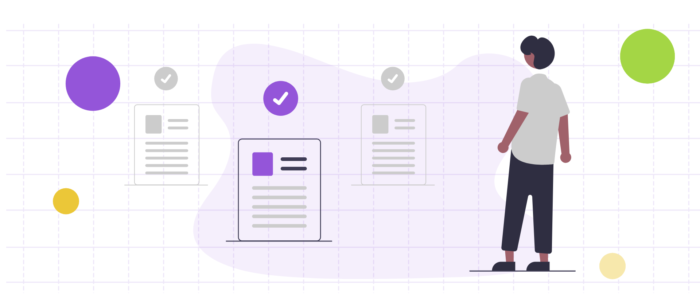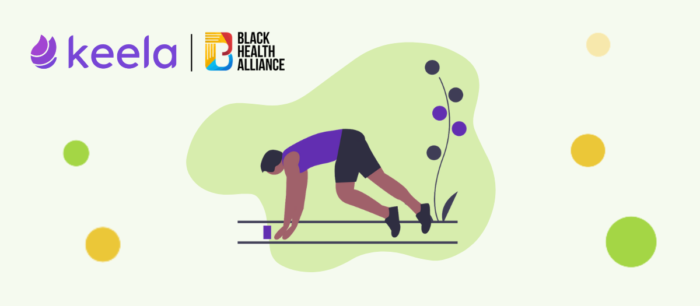The Complete Guide to Nonprofit Email Marketing

Are you spending more time working on your donors than with your donors?
Maintaining donor engagement while managing the day-to-day activities of a successful nonprofit organization requires a mix of human interaction and smart tools. Eliminating routine tasks frees you up to focus on the most critical part of your business: people.
Email marketing is invaluable for staying connected with your donors and supporters.
Nonprofit email marketing helps you spread the word about the important work you do every day and get people involved in your mission. It can mean the difference between building long-lasting, win-win relationships and losing your audience entirely.
If you haven’t written a marketing email before, never fear! In this comprehensive guide, we’ll teach you everything you need to know about nonprofit email marketing so you can stay top of mind and keep the donations coming in.
What Is Nonprofit Email Marketing?
Nonprofits constantly struggle to get their message heard and achieve their fundraising goals. With so many distractions competing for a donor’s attention, it only makes sense to use a marketing channel known for getting the best results: email!
Nonprofit email marketing is a direct marketing strategy that involves communicating with and soliciting donors, supporters, and prospects via electronic mail. This form of marketing and communication allows nonprofit organizations to send targeted messages to specific donors and donor segments.
Nonprofit email marketing centers around creating email campaigns that speak to potential contributors, helping convert them into donors and long-term contributing partners. A successful email marketing campaign requires you to leverage creative, engaging content and measure its effectiveness with useful metrics.
Historically, email marketing generates the best return on investment (ROI) for your marketing dollars – around $40 earned for every $1 spent. Wow! If you strive to get noticed and grow your base of engaged contributors, email marketing is the vehicle to help you get there.
5 Nonprofit Email Marketing Metrics
Data should drive every marketing decision your nonprofit makes. So before you jump right into creating your first email, it’s important to set some benchmarks, so you know what constitutes “good” or “bad” email performance.
MailChimp recently performed a survey assessing email metrics across various industries. Of the 46 industries surveyed, the nonprofit industry had the fifth-highest average email open rate.

Here’s how nonprofits stack up against all industries across five common email metrics:
What do these terms mean?
1. Average Open Rate
Average open rate is the number of emails opened out of the total number of emails sent. High open rates typically correlate to compelling subject lines.
2. Average Click Rate
Average click rate is the number of clicks you receive out of the total number of email views. This shows how enticing your calls to action are.
3. Hard Bounce
A hard bounce happens when an email has failed to deliver for permanent reasons, like an invalid email address.
4. Soft bounce
A soft bounce is caused by a temporary delivery issue like a full mailbox or an offline server.
5. Unsubscribe Rate
The unsubscribe rate is the percentage of people who opt out of your email list. If this number is high, you may be sending too many emails, or your content isn’t hitting home.
6 Benefits of Email Marketing for Nonprofits
Effective communication is vital to your nonprofit organization’s success.
You need a platform to relay information, build and maintain relationships, announce events, and ask for donations to fulfill your mission.
Here are a few undeniable benefits of email marketing for nonprofits:
1. Reach more people faster.
Most nonprofits don’t have the resources for mainstream media ads. Your email marketing campaigns help you reach more people at scale.
2. Send more targeted and relevant messages.
Cold calling and “spray and pray” snail mail campaigns are a thing of the past. Targeted email marketing enables your nonprofit to benefit from technology that identifies ideal donors. Opening doors to communicate with those donors helps align their goals with yours for long-term partnerships.
3. Increase donations.
Email marketing tools designed for nonprofits help you reach your ideal donors and pave the way for increased contributions.
4. Maximize your resources.
Many nonprofit organizations struggle with limited time and resources. Using email marketing increases your reach while helping you utilize your resources effectively.
5. Maintain regular, top-of-mind awareness.
Email automation and drip campaigns enable you to stick to a predetermined schedule of donor touchpoints while scaling resources. Regularly connecting with your audience keeps your mission and organization top of mind.
6. Deepen trust with your audience.
Additionally, maintaining steady communication creates familiarity and trust, two factors that help build engagement and, ultimately, donations.
3 Tips for Writing Great Nonprofit Emails
1. Personalize it.
What interests your donors most? If your content doesn’t captivate your audience and inspire them to act, your marketing efforts have failed. Think about who you’re sending to and why. Use your data to learn what they’re interested in and tailor your content accordingly.
2. Keep it simple.
While your supporters are interested in who you are and what you do, they’re busy too. People want valuable and entertaining content that won’t take too long to read. Keep content clear and to the point — one topic per email.
3. Make it Mobile Friendly.
Most emails are now opened on mobile devices (45.6% for nonprofits), so your content must be readable on mobile. Email marketing tools, like Keela, Let you preview emails before you send them, so you can test how they look from your mobile device and fix any formatting problems.
10 Ways to Engage Donors Using Emails
The best way to succeed with email marketing is to pick a topic that works and stick with it, right?
Not exactly.
While you can (and should) duplicate a successful formula, diversifying your content is vital to building a loyal audience. Your primary goal should be to offer constant value and long-term benefits for those who support your cause.
Here are 10 ways to engage your donors and supporters using your nonprofit email:
1. Welcome
Always send emails to new contacts promptly, welcoming them and thanking them for their interest. Tell them a little about your organization and its importance to your success.
Here are a few more things to include:
- To keep the conversation going and inspire engagement, encourage them to follow you on your social media channels. Share links to your Facebook, Twitter, Instagram, and LinkedIn pages.
- Ask for a referral! If a new subscriber likes you, chances are they know someone who will like you, too.
- Ask new subscribers to add you to their contact list, so your emails don’t end up in their spam folder.
2. Inspire them
What’s happening in your world? Make your emails stand out by including compelling success stories that highlight your cause or organization. Show your donors how they’ve contributed to your cause in concrete ways. Storytelling incorporating emotion and imagery is inspiring and impactful.
3. Learn and Engage
Are you listening to your donors? Asking your supporters for direct feedback using surveys or polls can be a more effective method for assessing interest than simple data mining. Plus, it creates an interactive communication channel that enables you to understand what’s important to them.
4. Ask for donations
Asking for donations is critical to reaching your fundraising goals. Remember, the people who have signed up to receive emails from you are already rooting for you. But you’re probably not the only organization they support, and they are unlikely to give unless you ask them directly. Be clear on what you’re asking, make it easy for them to respond to that ask, and show how specific gifts will impact your organization.
5. Match donations
Offering a donation match incentive can encourage donors to give, especially if they’re only able to pledge a small amount. Enabling a donor to double their impact within a specific time frame can be especially useful in creating urgency to participate.
6. Say thanks and communicate impact
Thank you emails are critical to keeping your donors engaged. Whatever they have given you (be it time, money, or any other resource) deserves recognition and appreciation. Their donation makes an impact on your organization, and you need to continue thanking them for it.
Remember to tailor your message to different donors and purposes. Using email marketing software can help you automate much of this process, making it easy and seamless.
7. Send seasonal/holiday messages
Sending emails during the holidays or seasonal changes (Spring is in the air!) provides opportunities to keep in touch with your contacts. Go off the beaten path by taking advantage of unusual holidays or events to attract more attention. Being aware of changes in giving trends throughout the year enables you to plan your fundraising events more effectively.
8. Remember retention emails
Are you following up with your contacts? Retention emails remind your contacts of the impact they have already had, rather than be a new ask. When did they give? How much? Did they attend an event or volunteer? Use data to share how their contribution has affected your organization and the communities you serve.
9. Launch new campaigns
Let your supporters know what fundraising campaigns you have coming up and how they can get involved. Creating specific campaigns that target supporters whose interests align with yours is a great way to maximize contributions.
10. Feature fascinating facts
People often scan text rather than read in detail. Include bulleted lists, infographics, or statistics every so often to keep readers interested. You can pull data from industry sources or your own internal metrics, and use a free infographic template to quickly visualize the data and attract more readers.
5 Key Components of a Nonprofit Email
Everyone loves a useful checklist! Use this list as a guide to make sure you cover all your bases before hitting “send.” Every email you send should include:
1. A compelling subject line
Did you know that 47% of marketers say they test different email subject lines to optimize their emails' performance? An email’s subject line is often the first thing to catch a reader’s attention. A subject line needs to be short, to the point, and compelling enough for the reader to take action. If they don’t connect with the subject line, they aren’t likely to even open the email.
2. A sender they recognize
Do you usually open emails from people or organizations you don’t know? Neither do we. If you have someone’s permission to email them, make sure the sender’s name is familiar to them.
Whether you designate the sender as the CEO or Susie in your Marketing Department, make sure your email address includes the organization’s name for easy identification. Do not use “no-reply” email accounts, as they increase the chance of your message ending up in a spam folder.
3. Call-to-action buttons (CTAs)
Engaging content will encourage donors to click on a call-to-action button (CTA). These can be simple and direct. “Donate now” or “Volunteer” both attract attention. Making specific asks such as “Donate $25” or “Grow a Seed Library” are also great options.
4. Appealing design
You might have crafted inspiring content, but it likely won't get read without a compelling design to deliver your message. There are numerous templates available, and good donor management software will come with customizable templates for your email campaigns. Make sure your content includes CTAs that encourage readers to take the next step.
5. GDPR Compliance
Keep your signup form as simple and easy to use as possible to comply with GDPR (General Data Protection Regulation). You want to make it clear for supporters to know how to sign up. One pop-up message saying, “sign up here” is great, but you don’t want that message popping up every time a potential supporter clicks on any link.
Make sure you provide double-opt-in options, and always have a way for members to unsubscribe or change their subscription preferences.
How Often Should Nonprofits Send Emails?
How often you should communicate with your subscribers depends heavily on their open rate habits.
While there is a fine line between sharing too much and too little. Sending email campaigns 2-4 times per month is ideal for most nonprofit email campaigns. However, it’s important to remember that no two email lists are the same, and your nonprofit’s targets could be different.
Continually monitoring your response rates helps you know how little or how much to contact your donors.
3 Essential Nonprofit Email Marketing Tools
Now that you know how, why, and what you should email, wouldn’t it be great if you could automate some functions that make managing your tasks easier? Here are a couple of email marketing tools that can reduce your busy work so you can focus on building relationships.
1. Keela
Keela’s complete nonprofit software gives you powerful, intelligent tools to manage your donors, mobilize your volunteers, market your nonprofit, and raise more money. Keela’s built-in email marketing tool allows you to:
Set goals and keep track of desired outcomes from your email efforts. Build targeted email lists based on donor behavior, preferences, and more Send beautiful emails using an easy drag-and-drop template builder, track email success and make quick adjustments using real-time data and powerful analytics
Keela includes features that give you access to both its CRM and email marketing tool. Starting at 90 USD and 100 CAD a month, Keela’s pricing is based on the number of contacts you have in your database.
2. Mailchimp
Mailchimp brings your audience data, marketing channels, and insights together so you can reach your goals faster. Import your donor contacts from Mailchimp into your CRM to manage your campaigns and subscribers.
3. Constant Contact: The Best Deliverability Rate
Constant Contact is one of the best email marketing software platforms on the market. This email platform gives you many customizable email templates and free stock images to choose from. It’s also a useful tool for event promotions as it allows you to manage event invitations, registrations, and tickets.
Constant Contact offers a 60-day free trial. After that, you can choose from two pricing plans. The basic “Email” plan starts at $20, and the “Email Plus” plan starts at $45 a month.
.svg)



